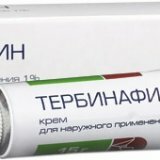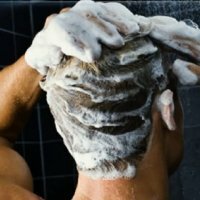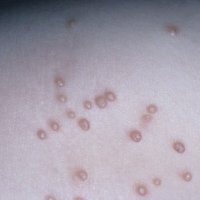Preparations for the treatment of onychomycosis

Onychomycosis is a common nail disease in which they are affected by a fungal infection. It is known that in 50% of cases this disease is associated with a mycotic infection. In elderly patients, the risk of developing onychomycosis is highest. In elderly people the violation of peripheral and trunk blood circulation, as well as slow growth of nails, contributes to the appearance of this disease. This disease often occurs in patients with diabetes mellitus and patients with immunodeficiency states( as well as in AIDS patients).
Many doctors and people suffering from this disease consider this problem to be exclusively aesthetic. But this should be taken seriously, since the disease has a chronic character, and in cases of immunodeficient conditions, it causes the development of mycosis of the skin and its appendages. Infection in most cases occurs through objects, for example, washcloths, foot mats, nail files, and also through shoes. Onychomycosis can develop after going to the bath, gym, swimming pool.
Drugs for the treatment of
Different in composition, spectrum of activity, mechanism of action, drugs for the treatment of onychomycosis, but common for specific effects on pathogenic fungi. This group of drugs is azoles( fluconazole, itraconazole, ketoconazole), cyclopyrox, griseofulvin, amorolfine, allylamines( naftifin, terbinafin), as well as itraconazole, fluconazole, terbinafine. For external use, solutions and varnishes containing cyclopyrox, amorolfine
can be used. For onychomycosis and treatment of the disease, topical preparations are ineffective. Before treating with antifungal solutions, ointments, varnishes, creams, it is necessary to remove the affected area of the nail with keratolytic patches or mechanically.
A kit of Mycospores can be used as a keratolytic agent. The ointment is applied to the surface of the nail and is closed with a band-aid and a bandage, they are also in the kit. After the day, the affected areas are cleaned. Procedures must be performed daily until the infected nails are completely removed. In the future, during the removal of the nail keratolytic, it is necessary to use local antimycotics, these can be antifungal varnishes.
In the first month of treatment of onychomycosis, Griseofulvin is prescribed. In a day should be used for 6-8 tablets( 750-1000 mg) in 3 divided doses. The second month is the same dose, but every other day. Next, the drug is applied 2 times a week. The drug is taken with vegetable oil. The treatment time is from 4 to 6 months with mycosis of the hands, from 9 to 12, and sometimes 18 months with mycosis of the feet.
This treatment provides recovery in only 40% of patients. In combination with the removal of nails, the percentage of cure increases. But its use is limited to a large number of side effects, as well as a high percentage of relapses.
Ketoconazole is used for 200 mg( 1 tablet) with meals per day. Treatment is 4-6 months with onychomycosis of the hands, 8-12 with onychomycosis of the feet. Such treatment leads to recovery of about 40% of patients. Increase the percentage of cure allows removal of nails by surgical method. Itraconazole can be used in two different ways. The first - the drug is prescribed for 200 mg( 2 capsules) per day, for 3 months. Scheme two - pulse technique: 7 days to 400 mg per day in two divided doses, in the morning and in the evening, then you need to take a break of 3 weeks, then 7 days, as in the beginning. With mycosis of brushes, 2 such courses are prescribed, and in case of mycosis, stop - 3-4.
Terbinafine is used daily for 250 mg( 1 tablet) for 1.5 months with a disease of the hands, 3 months for the disease of the feet. The effectiveness of treatment in this case is 88-94%.The percentage increases after completion of therapy, and after 48 weeks the maximum effectiveness of
is achieved. Fluconazole is administered 150 mg once a week. Such treatment is 6 months with mycosis of brushes, and with foot mycosis - 8-12 months.



